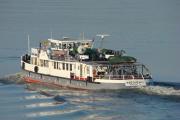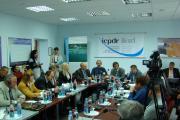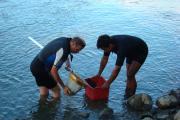The `Joint Danube Survey 2´ (JDS2) was launched on August 14, 2007 in Regensburg, Germany. Overall, 96 sites on the Danube River and 28 on its major tributaries were sampled by the three JDS2 boats which travelled through 10 countries to the Danube Delta in Romania and Ukraine until late September. The JDS2 was possibly the world's biggest river research expedition ever!
Its main goal was to produce highly comparable and reliable information on water quality and pollution. This will help Danube governments to implement the `Danube River Protection Convention´ which they signed in 1994. It will also help them to meet the `EU Water Framework Directive´ - possibly the world`s strongest water legislation. The Directive's goal is to ensure that rivers and lakes have "good chemical and ecological status" by 2015 - meaning that they should provide clean water as well as good conditions.
Find out more about the JDS2 or the Danube and EU law.
After the expedition ended, scientists throughout Europe analyzed the samples of water, sediment, plants, fish and other aquatic life. This work led to a `Final Scientific Report´ and a hands-on public document - `The Joint Danube Survey 2: Research Expedition and Conclusions´. The final results show that the Danube and its tributaries are becoming cleaner, but measures to reduce particular pressures are needed.
Find out more about the final results of the JDS2.




















